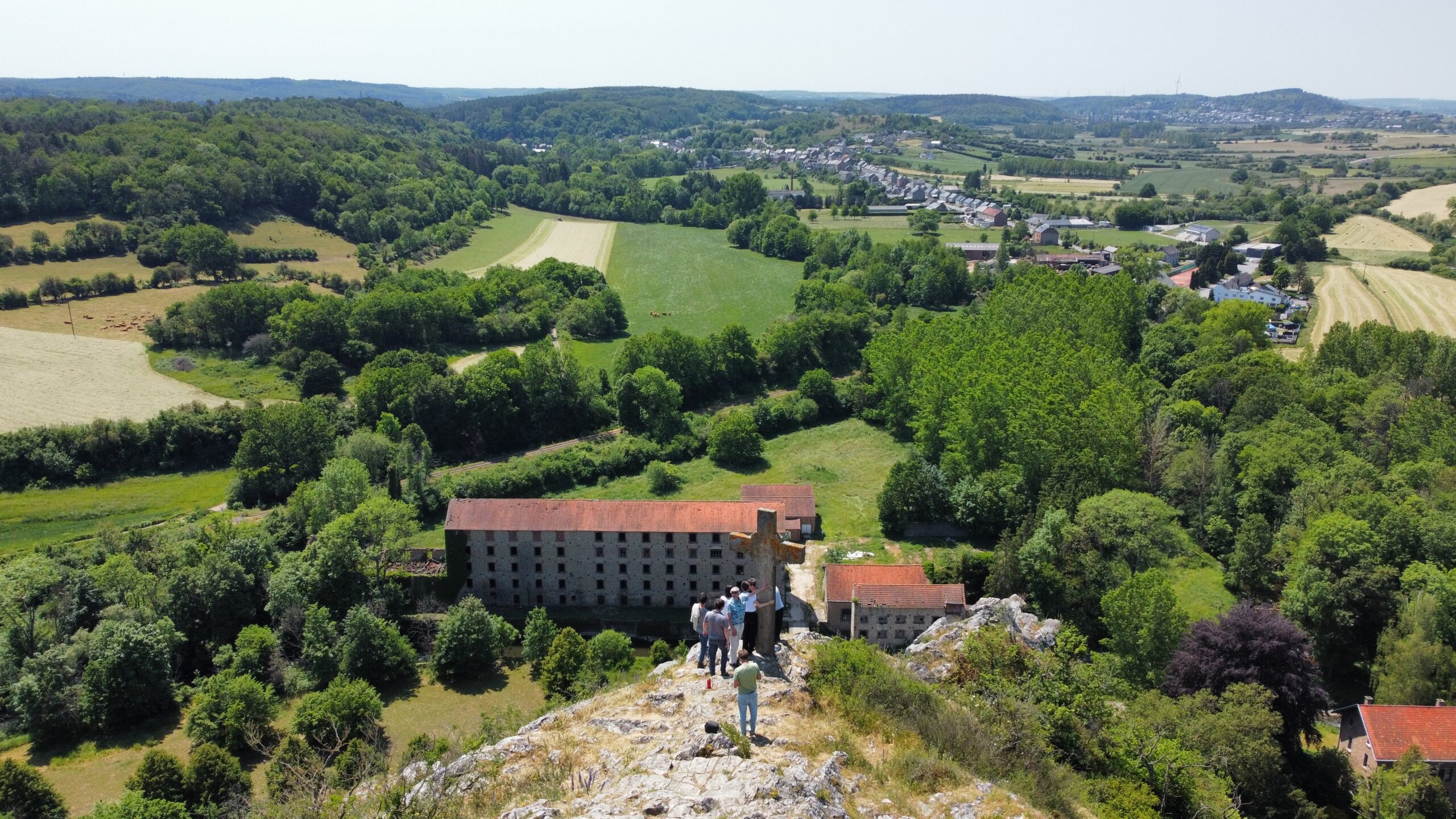| Tutor(s) | Wes Degreef, BC team |
| Campus | BXL |
| Language | EN |
| Engagement | Craftsmanship |
| Semester | 1 |
Description of the studio:
The pre-industrialized idea of the master builder may just reemerge in the context of circular building materials and techniques. It embodies the notion of an integrative method of architecture, rooted in regional context, regional resources, and regional workmanship. We look back at the time where the professional architect wore many hats; generalist, facilitator and master builder within the wider scope of the built environment. By continuing this way of working awareness of how design may affect bigger networks and flow patterns will emerge. To begin the architect needs to study and comprehend how materials and construction flows affect design. Through the iterative process of prototyping and testing at different scales, we can expand our knowledge.
The building process will get significant attention as a powerful tool for social involvement, material research, and climate change mitigation. We frequently refer to „the act of building“ when defining the construction process because it refers to the extensive effort made by a community to create infrastructure using a variety of materials, technologies, and skill sets. Design and build has the ability to transform via action, narrative, and outcome. With the help of this studio, a fresh approach to the creation, building, and utilization of infrastructure and (human) resources can surface. The student is therefore guided to understand architecture as a profession in a more cohesive manner. The design and build of a small cabin gives students the ideal platform to engage in all parts of the building process from design to realisation.
Focus Autumn 2023 – Material & Action – group of 2 students
ACT I. quarries & resources
The first semester will start with analysing the area in and around the site, Viroinval, from the perspective of a building material researcher. The students will research within a radius of 50km of Viroinval, projecting within the surrounding resources as a quarry, as a material and as a resource supplier. Working in groups of two, the students will be divided across four material categories to analyse the resource and construction possibilities in-depth.
The four categories are:
Quarry (varied types of stone)
Sawmill (wood)
Fibre (straw, wool, plants)
Urban (existing materials such as wood or concrete)
Low-tech materials like (processed) salvaged materials, demountable structures, byproducts from production processes, waste/excess/underutilised raw materials and regional bio-based materials should be a focus of the research. Based on the students prior findings and analysis, they will then develop new/innovate on existing materials in a hands-on workshop setting. Additionally, they will create a collection of circular structural and non-structural building elements with their material.
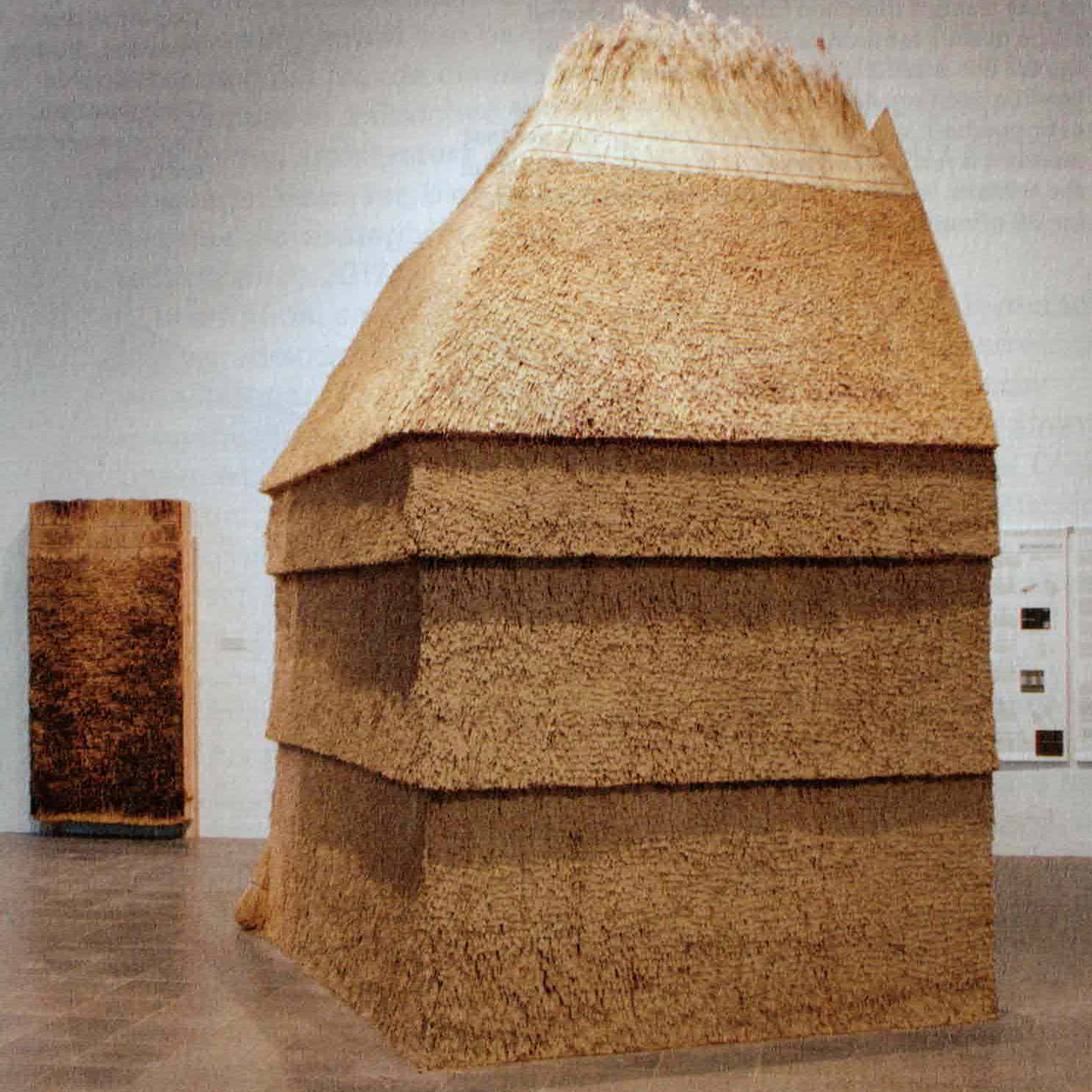
Biogenic construction by CINARK
ACT II. the folly
A folly, (from French folie, “foolishness”) in architecture is a costly, generally nonfunctional building that is erected to enhance a natural landscape. The students will design a folly to place within the quarry/material source context. The folly should represent, in one way or another, the site, its processing and its material.
Act II will focus on the design of a folly, which is based on the material research from Act I.
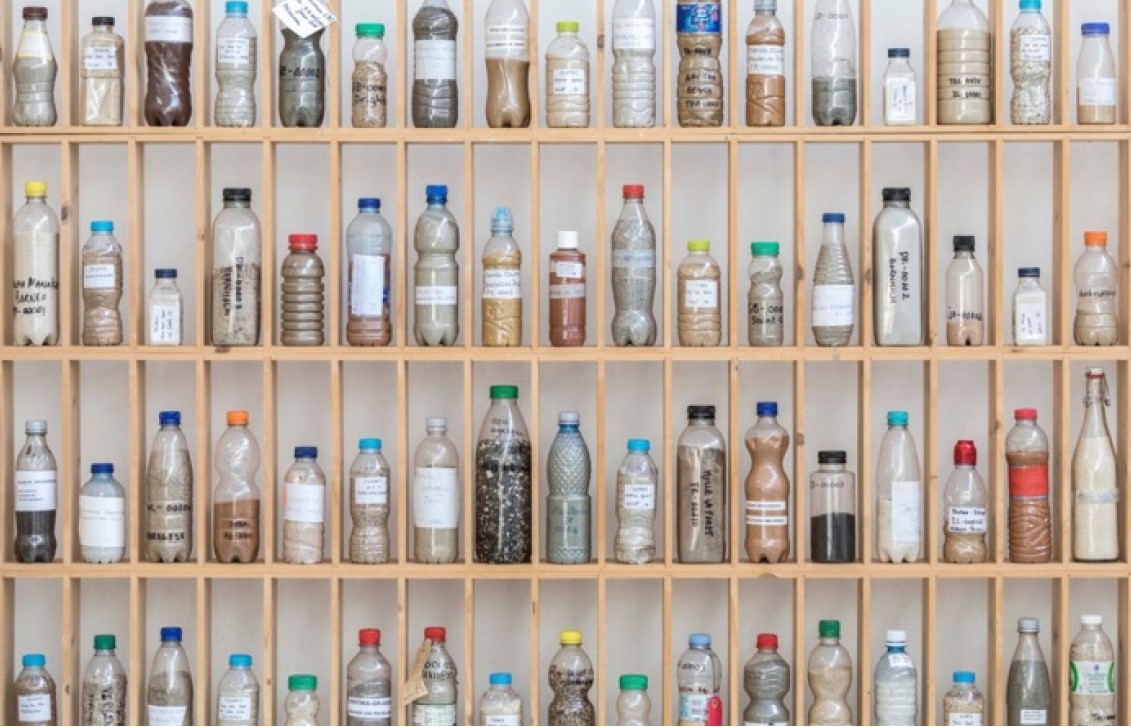
Material research
The main purpose of the folly is to test the possibilities and limitations of the material of choice, not from a functional approach. The goal of the folly is to experiment and test a building/construction detail with the idea that the detail could be implemented on site, into the final eco-accomodation building of the Virvoinval project. It should embrace the values of flexibility, time and transition. Through drawings, model experiments and 1:20 scale mock-ups, students will ‘experiment, fail, learn and develop’ to explore the possibilities and limitations of materiality, structure and the built environment. Detailed drawings will accompany the model.
While the folly does not possess a certain programmatic matrix, it is necessary to consider certain parameters for the structure itself:
Volume – transportable in one truck load (standard shipping container)
Weight – buildability with simple tools and labour
Assemble – demountable for future lifecycles of materials/folly
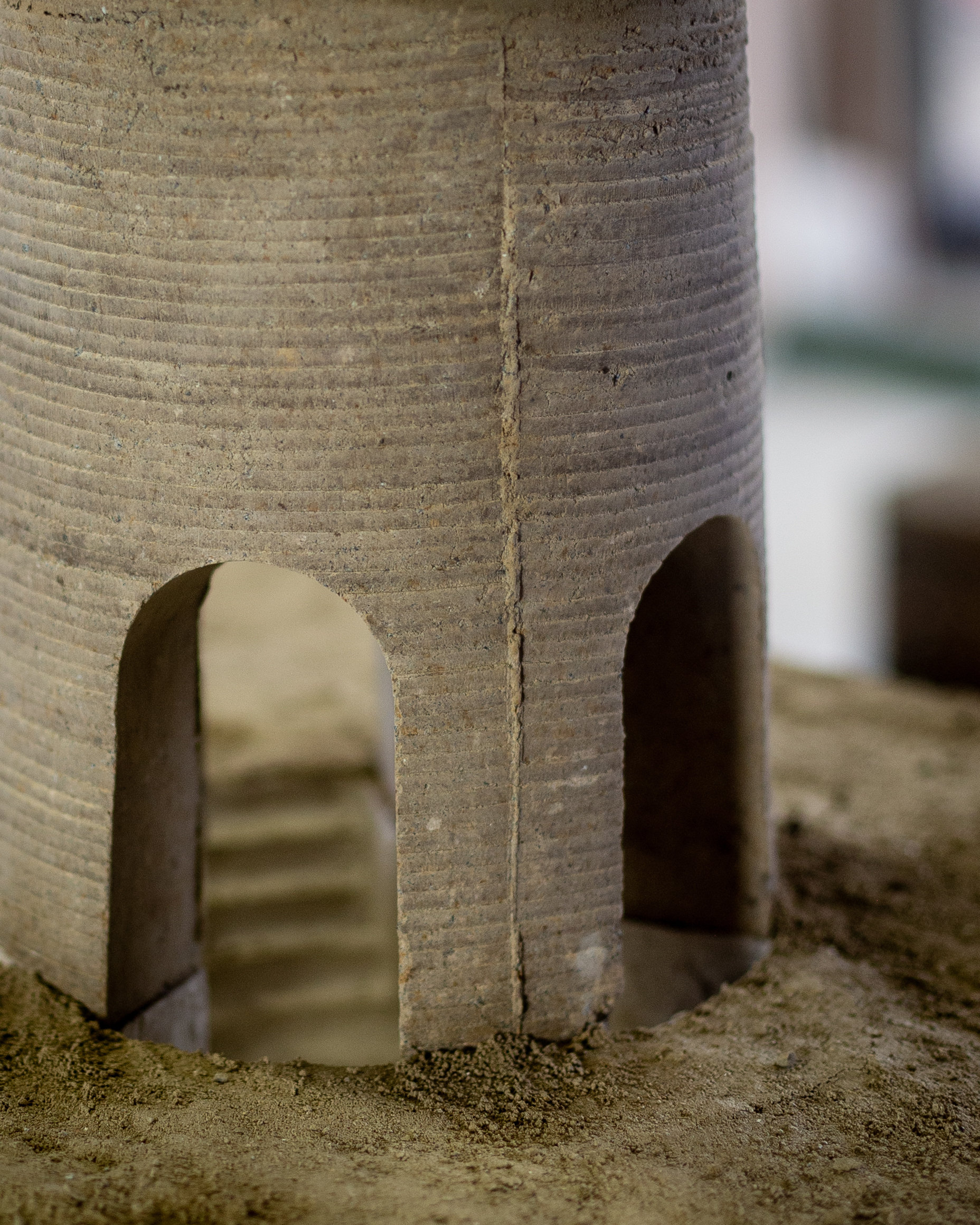
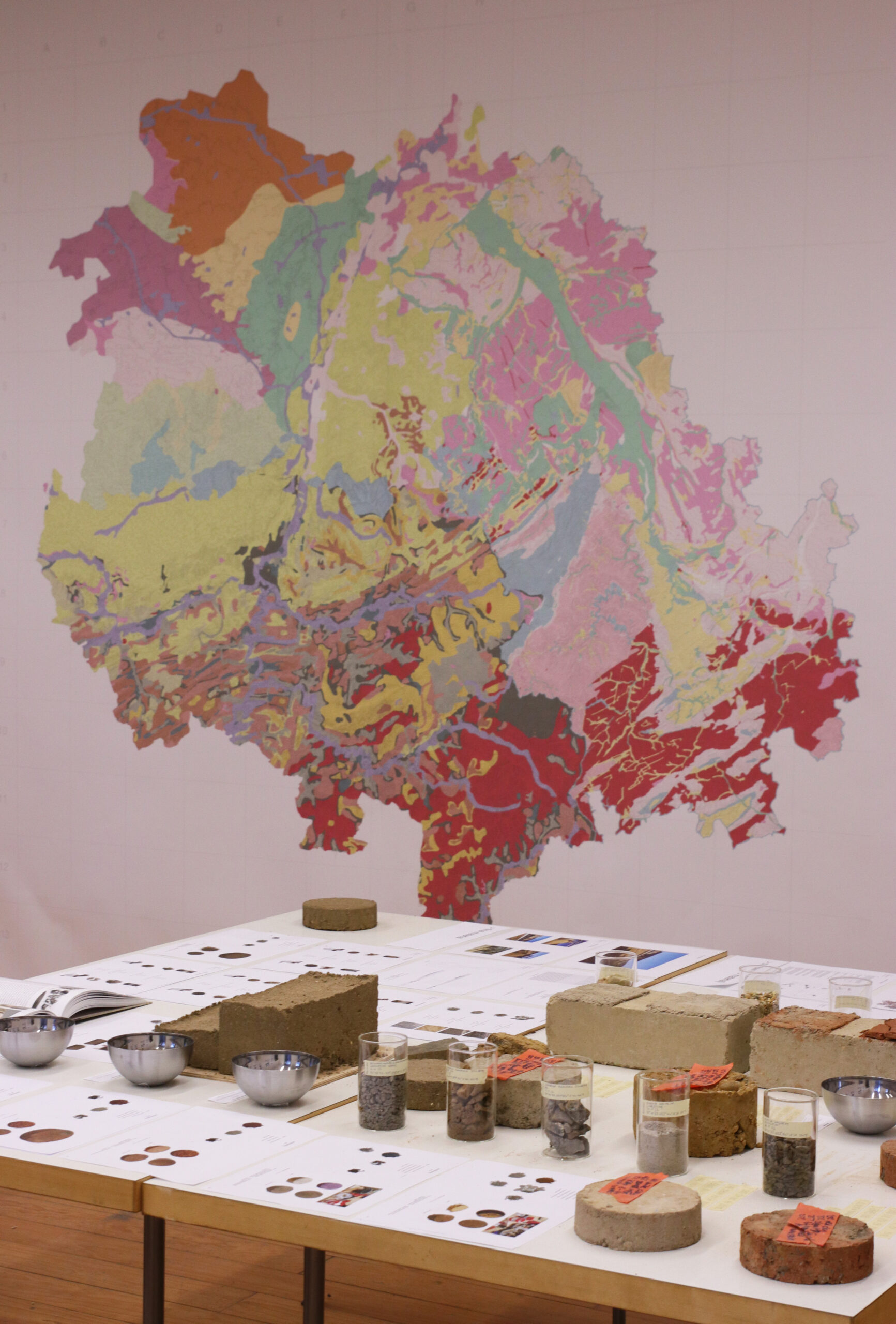
1 to 20 model (c) Jasper Van der Linden
RWTH student research and map
Expected output:
objectives: research and design
ACT I. quarries & resources
1.1. maps – context & resources
1.2. comparative research (template provided)
1.3. catalogue of resources (template provided)
1.4. material samples
ACT II. the folly
2.1. scale model 1:20
2.2. plans and sections scale 1:50
2.3. construction process drawings (buildability, transport)
2.4. lifecycle drawings (disassemble)
Excursion/study trip/…? (+ timing):
(timing is approximate and may be subject to change)
Week 1 –
- Morning: Site visit to Viroinval – project introduction by BC & client: site, ideas, aspirations.
- Afternoon: Independent fieldtrip to collect allocated resources (50km of Viroinval – south of the Entre-Sambre-et-Meuse region)
Week 2 –
- Workshop: introduction to material practices – how to research, collect and work with resources. At BC architects & studies & materials site in Brussels.
Between weeks 8-9 & 11-13 (dates TBC) –
- workshop prototyping: 1:20 model development @ BC architects & studies & materials
References/Further reading:
- Material Cultures. Material Reform: Building for a Post-Carbon Future
- Beyond Concrete. Strategies for a post-fossil Baukultur. 2022
- BUK ETHZ: Construction. Birkhäuser. 2021
- Manual of Natural Stone. Modern usage of a classic building material. Edition DETAIL.
- Reuse in Construction. A Compendium of Circular Architecture. 2022 :
- CULTIVATED BUILDING MATERIALS, Industrialized Natural Resources for Architecture and Construction, Birkhäuser Basel, 2017
- Constructing Architecture – material processes Fifth REVISED edition 2022 /Andrea Deplazes & Gerd H. Söffker / Birkhäuser, Basel, 2022
- Circular Constrcution and Circular Economy, Felix Heisel, Dirk E. Hebel with Ken Webster, Birkhäuser 2022

